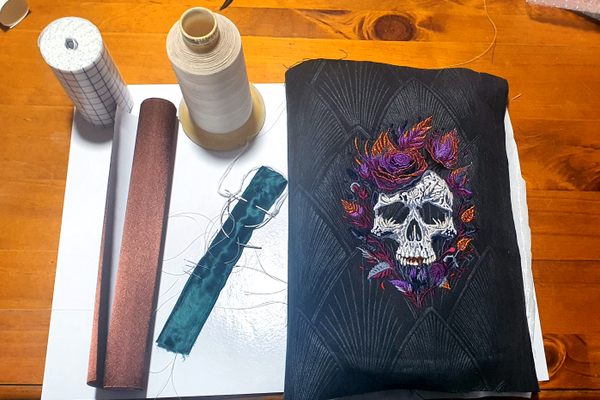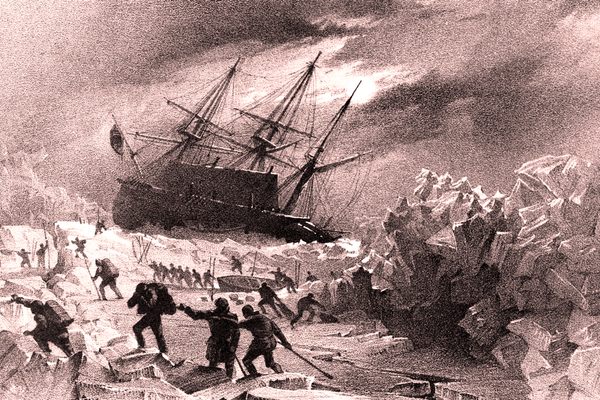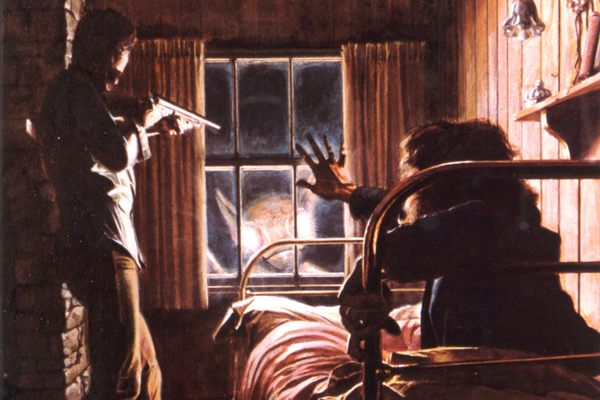Before ‘Fans,’ There Were ‘Kranks,’ ‘Longhairs,’ and ‘Lions’
How do fandoms gain their names?

The exact origins of the modern term “fan” are disputed, but most look to the 1880s, where it was first used by American newspapers to describe particularly invested baseball enthusiasts. But “fan” was just one of the words the press, leagues, clubs, and baseball enthusiasts themselves were using at the time. They were called “enthusiasts,” but also a whole host of other names, from “rooters” to “bugs” to “fiends” to “cranks,” sometimes spelled—as in the German word for “sick”—as “krank.”
“The Krank is a heterogeneous compound of flesh, bone, and base-ball, mostly base-ball,” begins Thomas Williams Lawson’s 1888 book The Krank: His Language and What It Means, a small, humorous glossary described by Major League Baseball’s official historian, John Thorn, as “baseball’s rarest book.” (Thorn has thankfully put a digitized version online.)
“The Krank cannot be mistaken for any other animal,” Lawson wrote. “His peculiarities are numerous.” Those peculiarities made for a noisy and notably participatory kind of fan culture: Kranks would heckle players, bang drums, and engage as much with each other as with the game. They shared insider lingo and knowledge, like how to bribe the ticket-taker to get into the more comfortable, better-positioned grandstand over the bleachers. They were known to outsiders—authorities, owners, reporters—as a group with an encompassing set of traits. Much like fans today, they were often treated as a monolith: one to be enticed because of their enthusiasms, and policed when those enthusiasms didn’t align with the desires of non-fans.


“How can we use instances of enthusiastic behavior in the past?” asks Daniel Cavicchi, an American Studies scholar who teaches at the Rhode Island School of Design. “How do we point to all of those and say, ‘This is connected to what we consider fandom today?’” Cavicchi, who began his academic career focusing on music fans, is now looking through history to find instances of fandom-like groups, from fire buffs to trainspotters to flower fanciers. “Clubs are formed, people meet regularly, they start doing the same things, and they develop their own language,” Cavicchi says. “All of the things that we associate with fandom today, from music to sports.”
These groups, Cavicchi explains, were often considered too passionate and problematic, both by outsiders and others within the fandom itself. “Fandom, at least in Western, European, and North American society, was not always accepted. There’s always some sort of element of society that wants to control it in some way, or tamp it down, or put it in boundaries. So we can be enthusiastic, but not too enthusiastic.”
Finding the fans of past eras can be a tricky task. Language changes a great deal over time, and much of how we view and discuss fan culture today is mediated by the big modern structures that shape our fannish worlds, from industries like Hollywood and sports leagues to the spaces, both analog and digital, that bring fans together.

Cavicchi is particularly interested in the naming of fans and fan-like groups—the way a label suggests a fannish identity, and puts a boundary around its members. “I use words to think about the history of fandom, because it’s another entry point,” he says. “It’s something that’s visible, that left a trace, and we can kind of use them as doorways into cultures.” He began collecting names for people-who-loved-things-in-groups years ago, which he published in a paper entitled “Fandom Before “Fan”: Shaping the History of Enthusiastic Audiences.” Though there were no “fans” before 1880, he writes, “there were ‘amateurs,’ ‘beggars,’ ‘boomers,’ ‘buffs,’ ‘bugs,’ ‘connoisseurs,’ ‘devotees,’ ‘dilettantes,’ ‘enthusiasts,’ ‘fanatics,’ ‘the fancy,’ ‘fiends,’ ‘gluttons,’ ‘habitués,’ ‘heads,’ ‘hounds,’ ‘kranks,’ ‘lions,’ ‘longhairs,’ ‘lovers,’ ‘maniacs,’ ‘matinee girls,’ ‘nuts,’ ‘rooters,’ ‘Lisztians,’ ‘Wagnerians,’ and more.”
Lisztians and Wagnerians, the fans of the composers Franz Liszt and Richard Wagner respectively, are clearly the most legible to modern audiences. Fandom labels haven’t changed much since, whether in the musical sphere (Swifties) or TV shows (Whovians, fans of Doctor Who) or celebrities (Cumberbitches, a term from the 2010’s for passionate fans of actor Benedict Cumberbatch). “Longhairs” were often also Liszt fans: Liszt was an object of fandom so beloved that he provoked the “Lisztomania” of the 1840’s, which had people fainting at his concerts and collecting his trash as keepsakes. Liszt’s male fans would carefully coif their long hair, in contrast with the relatively unkempt Wagnerians.
“Lions” were also European music fans, taking their title from the Loges de Lions at the Paris Opera. Loges are private or semi-private boxes in opera houses and theaters, and at the Paris Opera, there were sections where members of a particular art society sat to watch the “lions of the stage” perform.

Like fandom names today, some came from within the group, some came from outsiders—and some fell in between. “The word ‘fan’ itself is controversial because there were multiple stories about how it emerged in baseball,” Cavicchi explains. “Some say it was dismissive, a team owner mocking the people who would hang out outside the dugout and harass the players. Some say it was a term of snarky endearment—journalists made it up because they saw there were these people that really, really loved baseball, and it was kind of endearing, but at the same time, it was a little bit odd, so they made up this shortening of ‘fanatic.’” Cavicchi notes that the “fanatic” root is disputed, too; he prefers the theory that it’s a shortening of the much older “fancy,” a word for boxing clubs from the 18th century. The term “fancier” was in use by the 19th century, many decades before “base-ball fans” were earning their nicknames.
This, of course, stretches across the history of fandom: Differences like age, geography, approach, and values can lead to different groups forming around the same thing. Trekkies versus Trekkers, for instance, or Holmesians versus Sherlockians. “How you name yourself says a lot about what you think of yourself and your very intense passions,” Cavicchi says. “But at the same time, another name or variation on the name, or another use of your name, maybe in a derogatory sense, may say something about what the culture thinks about you.” Modern fandom terms like “stan” and “fangirl” can connote very different things depending on the speaker—overly emotional and uncontrollable to a critic, or a term of in-group recognition to fellow fans.

Looking for fandom in earlier eras and today is often about recognizing and contextualizing slang. For example, the now-broad term “buff” comes from “fire buff,” a term for enthusiasts who stood on street corners watching a blaze in buffalo-skin coats. Even as some modern fandoms accept the names bestowed upon them by music-management corporations or television studio marketers, fans continue to create language for themselves, rendering some terms largely indecipherable to outsiders. Cavicchi is particularly interested in “why slang is so important for enthusiastic behavior. It’s almost like we don’t want to name it, so slang is the next recourse. That’s what’s available.” That distance was as important for 19th-century fans as it remains for some fans today. “[You can] use slang to name that which isn’t acceptable, and also to hide a little bit, to not push against the cultural arbiters of taste,” he says. “So you can practice your fandom and understand yourselves as a member of a group without being overly visible.”
There are no perfect comparisons between pre-“fan” groups and modern fandoms. To make them would flatten the context that shapes modern fan cultures, just as much as 19th-century culture shaped the “dilettantes,” the “lovers,” and the “matinee girls.” But there’s something powerful in seeing that people in past eras not only loved things deeply, but sought out other lovers of the thing—and gave themselves a name.









Follow us on Twitter to get the latest on the world's hidden wonders.
Like us on Facebook to get the latest on the world's hidden wonders.
Follow us on Twitter Like us on Facebook